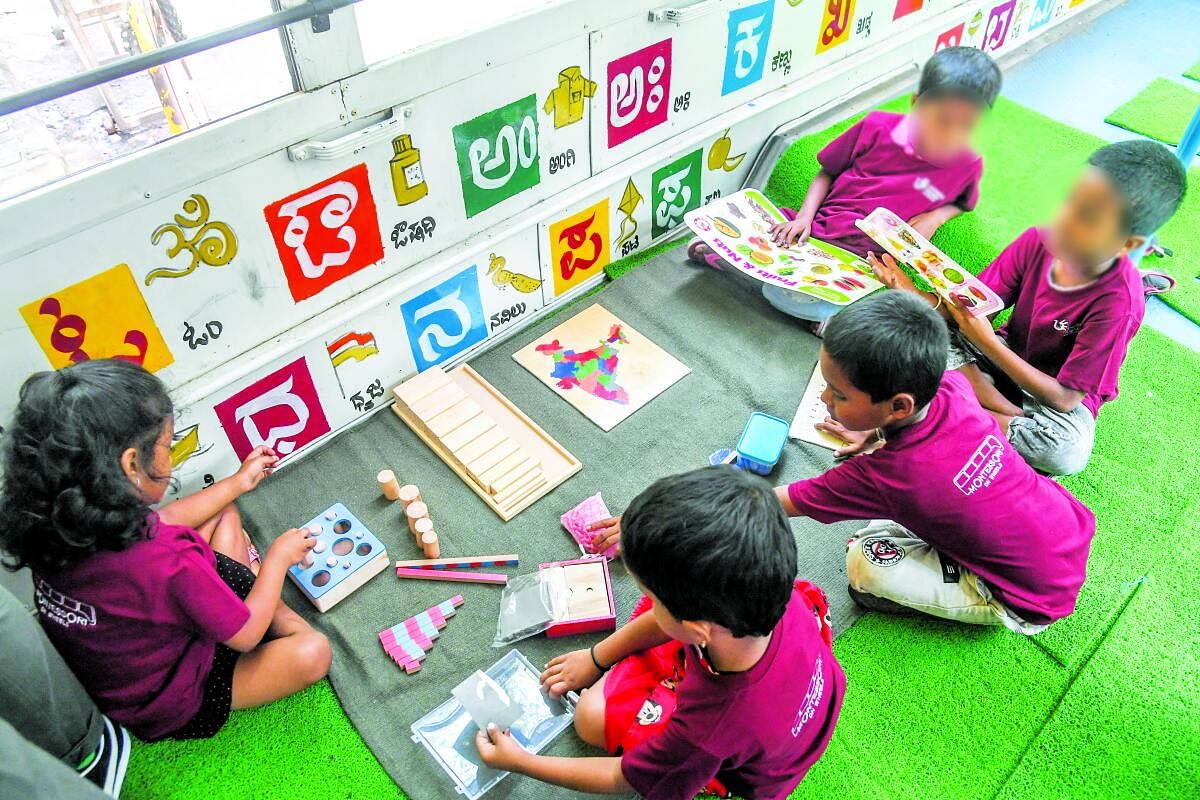
Not all schools that claim to be Montessories have accreditation from the Indian Montessori Centre (IMC), teachers say.
The focus is back on Montessories as a school that claimed to be one left its students unattended in a class. A video showing a child battering a younger one went viral last month (see box).
IMC, based in Malleswaram, grants recognition to schools across the country, and they are required to renew their recognition every three years.
Any school that wants to become a member of IMC can get a membership, irrespective of whether it follows the method or not.
Shamala Rao, director general of IMC, says, “Maria Montessori (the founder) did not patent the method or the term Montessori. So schools are free to use it. Parents need to make efforts to understand the difference between schools that follow the Montessori method and schools that are just members.”
The IMC website has a list of recognised schools and member schools.
Montessori method
The Montessori method rests on three pillars — specially trained teachers, a distinct learning environment, and specific study material. Schools need to fulfil these requirements to get an IMC recognition.
Unlike other kindergarten classrooms, Montessori classrooms have students from three mixed-age groups, such as three to five.
Rekha Reddy, director of Vidyanjali Academy for Learning, an IMC-recognised school, says teachers are trained on when they should intervene and help the child and when not to.
She cites the ‘pouring activity’ example. A child may not immediately acquire the skill to pour water from a jug into the glasses and back to the jug. It takes time for the child to acquire the skill. An untrained teacher corrects the child immediately when water is spilled. But a Montessori-trained teacher observes the child and allows him/her to learn through mistakes. “So as a rule, we do not interfere with the errors that arise while mastering something,” she says.
The educational material handed to children is thoughtfully designed. It should have the right colours and precise weight, teachers say. But most manufacturers do not follow the rules set for manufacturing the material.
Additionally, the Montessori method focuses more on application than rote learning (the act of learning things by repetition). Rekha recalled an incident when a child from a regular kindergarten was able to recite numbers from 1 to 100 but was unable to match the numbers with their quantities.
Angeline Lilard, a psychologist from the University of Virginia, has conducted various studies on developmental learning. In one of her studies, she found that Montessori children are better in executive functions such as social problem-solving, display of self-control, and delayed gratification.
“Whether it is language, arithmetic, or any other concept, we use (specific) materials and a concrete way of learning for the child,” said Shamala.
INCIDENT
A video of a three-year-old boy beating up a two-and-a-half-year-old girl in an unattended Montessori school in Chikkalasandra surfaced
on the Internet recently.
BRIEF HISTORY
The Montessori method began on the streets of Rome when Maria Montessori, one of the first female physicians of Italy, started working
on sensory-motor understanding in children with mental disabilities.
She developed the method with her collaborators over 45 years. Maria came to India in 1939 on the request of the Arundales — George Arundale was a theosophist and Freemason. She adapted her educational system to the needs of Indian children, thus starting the
Montessori movement in India.